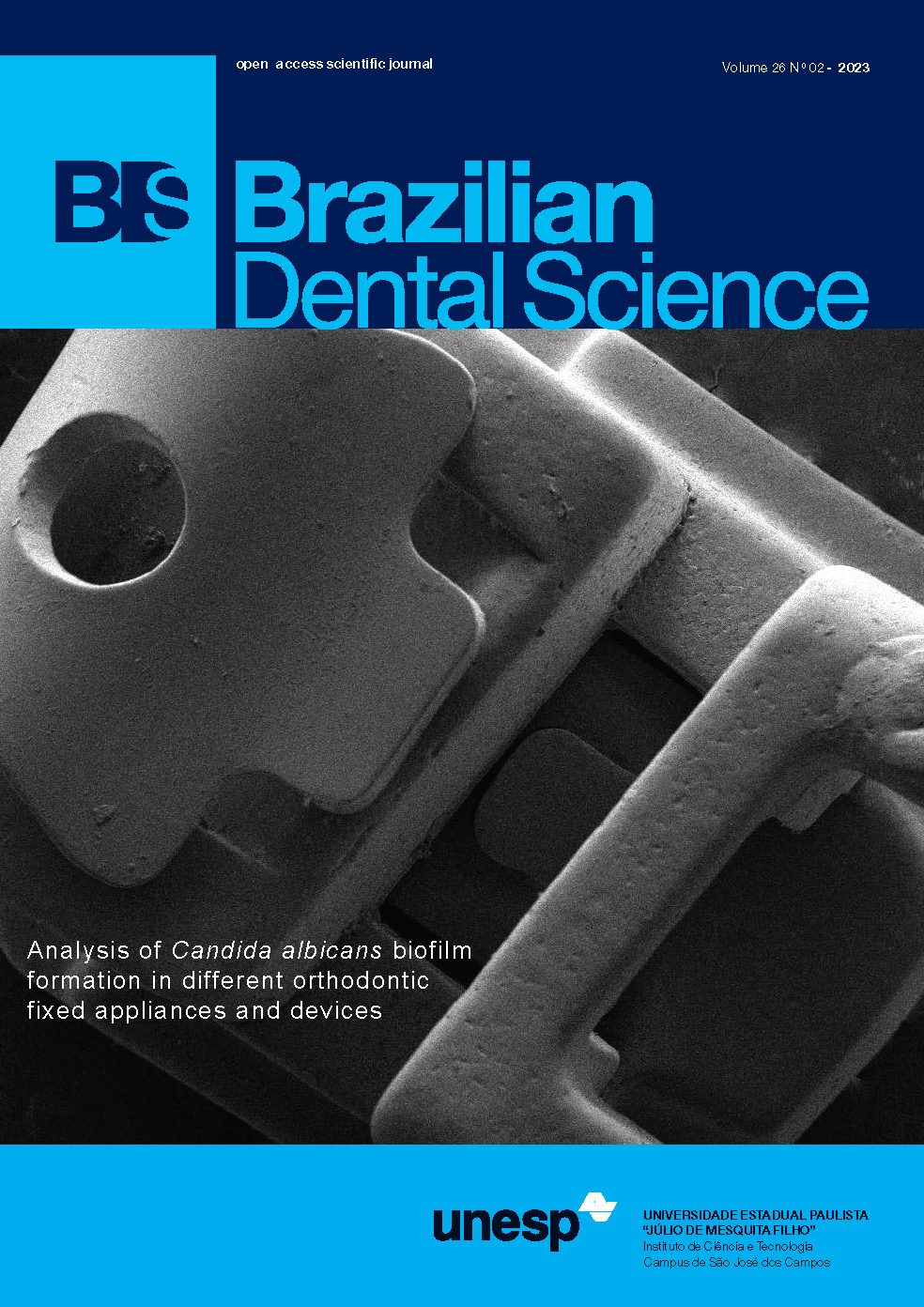The expression of matrix metalloproteinase-13 (MMP-13) on xenograft and PRF in bone regeneration
DOI:
https://doi.org/10.4322/bds.2023.e3366Resumo
Objective: inflammation may play a role in bone loss by altering the bone remodelling process, favouring bone
resorption by osteoclasts over bone synthesis by osteoblasts. Matrix metalloproteinase 13 (MMP-13) has the ability
to activate osteoclasts, leading to bone resorption. Regenerative treatments have been widely used in periodontology.
When combined with Platelet-rich fibrin (PRF), xenografts will give better results in bone regeneration. The aim of
this study was to evaluate the effect of xenograft combined with PRF on MMP-13 expression in a bone defect using
an experimentally created bone defect. Material and Methods: eighteen New Zealand rabbits were assigned to three
groups. Each group consisted of six New Zealand rabbits. A critical bone defect with a diameter size of 5 mm was
created in the right tibia of each rabbit in group 1 (application: xenograft), group 2 (application: PRF), and group 3
(application: xenograft and PRF). The PRF was produced from 5 ml of blood taken from each rabbit’s ears. After 30 days,
the rabbits were euthanized. The tissue samples were evaluated by immunohistochemical staining. Results: group 3
showed the lowest mean expression of MMP-13 (4.50) compared to group 1 (20.50) and group 2 (11.70). Group 3
showed a significant difference in the MMP-13 expression compared to group 1 and group 2 (P = 0.000) (P < 0.05).
Conclusion: this research showed that the combination of xenograft and PRF had the lowest expression of MMP-13.
The application of a xenograft and PRF has better osteogenesis ability in bone regeneration.
KEYWORDS
MMP-13; Xenograft; Platelet-rich fibrin; Bone regeneration; Inflammation.
Downloads
Downloads
Publicado
Como Citar
Edição
Seção
Licença
TRANSFERÊNCIA DE DIREITOS AUTORAIS E DECLARAÇÃO DE RESPONSABILIDADE
Toda a propriedade de direitos autorais do artigo "____________________________________________________________________" é transferido do autor(es) para a CIÊNCIA ODONTOLÓGICA BRASILEIRA, no caso do trabalho ser publicado. O artigo não foi publicado em outro lugar e não foi submetido simultaneamente para publicação em outra revista.
Vimos por meio deste, atestar que trabalho é original e não apresenta dados manipulados, fraude ou plágio. Fizemos contribuição científica significativa para o estudo e estamos cientes dos dados apresentados e de acordo com a versão final do artigo. Assumimos total responsabilidade pelos aspectos éticos do estudo.
Este texto deve ser impresso e assinado por todos os autores. A versão digitalizada deverá ser apresentada como arquivo suplementar durante o processo de submissão.




























